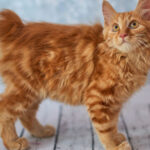The image of a black cat alongside a witch is iconic. From popular culture staples like Sabrina the Teenage Witch and Hocus Pocus‘s Thackery Binx, this stereotype is deeply ingrained. However, the concept of the cat as a devil’s agent or a witch’s familiar is not just a Hollywood invention. It has historical roots stretching back to the infamous witch trials.
Living in Salem, Massachusetts, and being a cat lover myself, particularly after adopting my black tuxedo cat, Berlin, I became fascinated by the connection between cats and magic. This curiosity led me to delve into the Salem Witch Trials of 1692, where I discovered compelling evidence of how cats were tragically used against the accused.
Cats as Accusatory Evidence in the Salem Witch Trials
During the Salem Witch Trials, cats were not just innocent bystanders; they were woven into the accusations themselves. One of the earliest individuals accused was Tituba, an enslaved woman. Initially proclaiming her innocence, Tituba faced brutal interrogations and physical examinations. Under immense pressure, she eventually “confessed.” When questioned about unusual encounters, Tituba recounted, “I saw two cats, one red, another black [and] as big as a little dog.” Further pressed about the cats’ words, she claimed, “They say to serve them.” (Godbeer, 86). Tituba’s testimony, fueled by fear and coercion, highlights the early association of cats with the supernatural in the witch hunt hysteria.
Months later, Sarah Wilson Sr.’s examination revealed a similar narrative. Reverend Increase Mather documented Wilson’s claim of seeing the devil. When asked to describe the devil’s form, Mather noted that Wilson stated the devil appeared to her in the shape of a cat. This recurring motif of the devil manifesting as a cat solidified the feline’s sinister image within the context of the trials.
Perhaps the most intriguing cat references emerge from the records of Samuel Wardwell’s case. Documents alleged that two decades prior to the trials, Wardwell encountered a gathering of cats behind the residence of the Bradstreet family. This family was notable as it included Anne Bradstreet, the first poet published in the American colonies, and her husband Simon Bradstreet, a Massachusetts governor. Constable Foster of Andover testified that Wardwell, “being once in a discontented frame, [Wardwell] saw some cats together with the appearance of a man who called himself a prince of the air and promised him [that] he should live comfortably and be a captain, and required said Wardwell to honor him,” (Ibid., pp 142). This testimony paints a picture of cats not merely as animals but as participants in pacts with dark forces. Samuel Wardwell was ultimately executed as a witch, alongside seven others, becoming a symbol of the era’s fear and superstition.
It is crucial to remember that none of the accused were actually witches. There is no evidence suggesting that those imprisoned, tortured, or hanged during the Salem hysteria practiced witchcraft. The fear stemmed from societal anxieties, misinterpretations, and deeply rooted superstitions, where even ordinary occurrences could be twisted into signs of devilry.
Polydactyl Cats: A Mark of Magic?
My own cat, Berlin, possesses a unique trait that further connects felines to folklore: polydactylism. He has seven claws on each front paw instead of the usual five, effectively giving him thumbs. This genetic variation, common in cats, has historically been associated with magic due to its unusual appearance.
New England’s coastal region has a high prevalence of polydactyl cats (Lettice, 979), suggesting they were among the first cats brought to the New World by Puritan settlers. Perhaps even Tituba’s “talking cats” were polydactyl, their unusual appearance adding to the air of suspicion and fear during the witch trials.
Fear of the Feline Unknown
During the witch trials, black cats were particularly targeted. The fear of magic and the devil intertwined with a broader fear of the unknown and the unusual. Puritan society viewed settled towns as divinely blessed, contrasting them with the wild, untamed woods perceived as domains of witches and the devil. In this worldview, cats, like other animals, could easily be interpreted as omens, familiars, or sources of misfortune.
In Rouen, France, the Aître Saint-Maclou preserves a non-polydactyl black cat, believed to have been placed there to ward off bad luck. Cats were valued on voyages as mousers, and polydactyl cats were considered good luck charms for sailors (Hartwell). Ironically, this very genetic mutation could have made them targets during witch trials, amplifying suspicion due to their “different” nature. While thankfully no cats were recorded as harmed in Salem, two dogs were executed as familiars, showcasing the era’s indiscriminate fear of animals linked to witchcraft.
The Enduring Magic of Cats Today
Some equate magic with creativity. In this sense, the polydactyl cat could be seen as a muse. Ernest Hemingway famously received a polydactyl cat named Snow White and became so enamored with her extra toes that he bred her offspring to perpetuate the trait. Today, polydactyl cats are sometimes called “Hemingway cats,” and the Hemingway Museum in Key West, Florida, houses around 40-50 of them, descendants of Snow White.
All cats possess a certain magic. My Berlin, being a black, polydactyl Salem cat, could easily fit the familiar stereotype. While he doesn’t talk, if he could, his demands would likely revolve around food or the correct petting technique, rather than granting wishes. He may not cast spells, but the wonder he inspires is undeniable. The age-old association of cats with mysticism persists, evident in the writer’s pet pawing at the keyboard, a connection that feels timeless.
Works Cited
Godbeer, Richard. The Salem Witch Hunt: a Brief History with Documents. Bedford/St. Martins, 2018.
Lettice, Laura A., et al. “Point Mutations in a Distant Sonic Hedgehog Cis-Regulator Generate a Variable Regulatory Output Responsible for Preaxial Polydactyly.” Human Molecular Genetics, vol. 17, no. 7, 2007, pp. 978–985., doi:10.1093/hmg/ddm370.
Hartwell, Sarah. Polydactyl Cats, 2001, messybeast.com/poly-cats.html.


